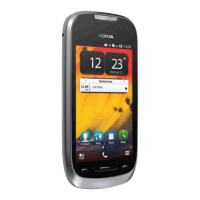What is the FDA doing to find out more about the possible health effects of wireless phone RF?
FDA is working with the U.S. National Toxicology Program and with groups of investigators around the world to ensure that
high priority animal studies are conducted to address important questions about the effects of exposure to radiofrequency
energy (RF). FDA has been a leading participant in the World Health Organization International Electromagnetic Fields (EMF)
Project since its inception in 1996. An influential result of this work has been the development of a detailed agenda of
research needs that has driven the establishment of new research programs around the world. The Project has also helped
develop a series of public information documents on EMF issues. FDA and the Cellular Telecommunications & Internet
Association (CTIA) have a formal Cooperative Research and Development Agreement (CRADA) to do research on wireless
phone safety. FDA provides the scientific oversight, obtaining input from experts in government, industry, and academic
organizations. CTIA-funded research is conducted through contracts to independent investigators. The initial research will
include both laboratory studies and studies of wireless phone users. The CRADA will also include a broad assessment of
additional research needs in the context of the latest research developments around the world.
What steps can I take to reduce my exposure to radiofrequency energy from my wireless phone?
If there is a risk from these products--and at this point we do not know that there is--it is probably very small. But if you
are concerned about avoiding even potential risks, you can take a few simple steps to minimize your exposure to
radiofrequency energy (RF). Since time is a key factor in how much exposure a person receives, reducing the amount of time
spent using a wireless phone will reduce RF exposure.
If you must conduct extended conversations by wireless phone every day, you could place more distance between your
body and the source of the RF, since the exposure level drops off dramatically with distance. For example, you could use a
headset and carry the wireless phone away from your body or use a wireless phone connected to a remote antenna.
Again, the scientific data do not demonstrate that wireless phones are harmful. But if you are concerned about the RF
exposure from these products, you can use measures like those described above to reduce your RF exposure from wireless
phone use.
What about children using wireless phones?
The scientific evidence does not show a danger to users of wireless phones, including children and teenagers. If you want
to take steps to lower exposure to radiofrequency energy (RF), the measures described above would apply to children and
teenagers using wireless phones. Reducing the time of wireless phone use and increasing the distance between the user
and the RF source will reduce RF exposure. Some groups sponsored by other national governments have advised that
children be discouraged from using wireless phones at all. For example, the government in the United Kingdom distributed
leaflets containing such a recommendation in December 2000. They noted that no evidence exists that using a wireless
phone causes brain tumors or other ill effects. Their recommendation to limit wireless phone use by children was strictly
precautionary; it was not based on scientific evidence that any health hazard exists.
Do hands-free kits for wireless phones reduce risks from exposure to RF emissions?
Since there are no known risks from exposure to RF emissions from wireless phones, there is no reason to believe that
hands-free kits reduce risks. Hands-free kits can be used with wireless phones for convenience and comfort. These systems
reduce the absorption of RF energy in the head because the phone, which is the source of the RF emissions, will not be
placed against the head. On the other hand, if the phone is mounted against the waist or other part of the body during use,
then that part of the body will absorb more RF energy. Wireless phones marketed in the U.S. are required to meet safety
requirements regardless of whether they are used against the head or against the body. Either configuration should result
in compliance with the safety limit.
Do wireless phone accessories that claim to shield the head from RF radiation work?
Since there are no known risks from exposure to RF emissions from wireless phones, there is no reason to believe that
accessories that claim to shield the head from those emissions reduce risks. Some products that claim to shield the user
from RF absorption use special phone cases, while others involve nothing more than a metallic accessory attached to the
phone. Studies have shown that these products generally do not work as advertised. Unlike "hand-free" kits, these so-called
"shields" may interfere with proper operation of the phone. The phone may be forced to boost its power to compensate,
leading to an increase in RF absorption. In February 2002, the Federal trade Commission (FTC) charged two companies that
sold devices that claimed to protect wireless phone users from radiation with making false and unsubstantiated claims.
According to FTC, these defendants lacked a reasonable basis to substantiate their claim.
16 Product and safety information

